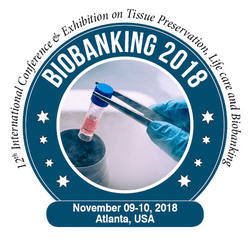Sarah K Steinbach
Brevitas Consulting, Canada
Title: Modeling aging and type-2 diabetes with precursors derived from skin
Biography
Biography: Sarah K Steinbach
Abstract
Objective: Few methods enable molecular and cellular studies of vascular aging or type 2 diabetes (T2D). Here, we report a new approach to studying human vascular smooth muscle cell (VSMC) pathophysiology by examining VSMCs differentiated from progenitors found in the skin. Approach and results: Skin-derived precursors (SKPs) were cultured from biopsies (N=164, ï¾1 cm2) taken from the edges of surgical incisions of older adults (N=158; males 72%; mean age 62.7±13 years) undergoing cardiothoracic surgery, and differentiated into VSMCs at high efficiency (>80% yield). The number of SKPs isolated from subjects with T2D was ï¾50% lower than those without T2D (cells/g:0.18±0.03, N=58 versus 0.40±0.05, N=100, P<0.05). Importantly, SKP-derived VSMCs from subjects with T2D had higher Fluo-5F-determined baseline cytosolic Ca2+ concentrations (AU: 1,968±160, N=7 versus 1,386±170, N=13, P<0.05), and a trend toward greater Ca2+ cycling responses to norepinephrine (NE) (AUC: 177,207±24,669, N=7 versus 101,537±15,881, N=20, P<0.08) despite a reduced frequency of Ca2+ cycling (events s−1 cell−1: 0.011±0.004, N=8 versus 0.021±0.003, N=19, P<0.05) than those without T2D. SKP-derived VSMCs from subjects with T2D also manifest enhanced sensitivity to phenylephrine (PE) in an impedance-based assay (EC50 nM: 72.3±63.6, N=5 versus 3,684±3,122, N=9, P<0.05), and impaired wound closure in vitro (% closure: 21.9±3.6, N=4 versus 67.0±10.3, N=4, P<0.05). Compared with aortic- and saphenous vein-derived primary VSMCs, SKP-derived VSMCs are functionally distinct, but mirror defects of T2D also exhibited by primary VSMCs. Conclusion: Skin biopsies from older adults yield sufficient SKPs to differentiate VSMCs, which reveal abnormal phenotypes of T2D that survive differentiation and persist even after long-term normoglycemic culture.

